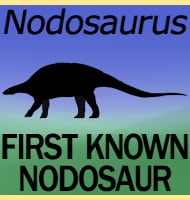Dzharatitanis
In Depth Dzharatitanis is a genus of rebbachisaurid sauropod dinosaur that lived in Asia during the late Cretaceous. Although initially described from a single tail vertebra, this fossil has revealed that Dzharatitanis was a rebbachisaurid sauropod dinosaur, making it the first rebbachisaurid genus to be discovered in Asia. Further Reading - First rebbachisaurid sauropod dinosaur … Read more

